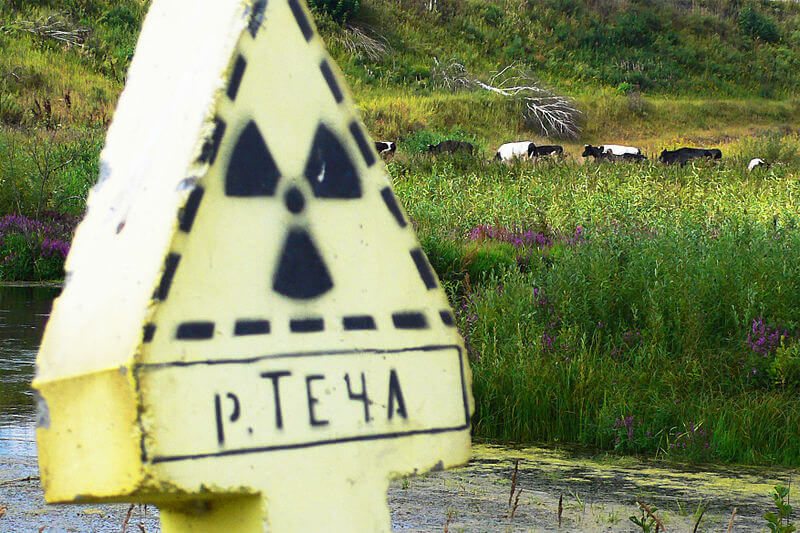It was the Cold War, and it was a potential race to Armageddon. The Soviet Union produced an excessive number of nuclear warheads, and we did likewise.
Now another war rages bitterly — but not on the front pages — over what to do with the legacy of cold war: plutonium from the warheads.
With the fall of the Soviet Union in 1991, and in the honeymoon period that followed between Russia and the United States, it was obvious that there were way too many warheads and the number needed to be reduced. In particular the key ingredient, plutonium, had to be contained and, preferably, disposed of.
In 2000, the United States and Russia agreed to dismantle large numbers of nuclear warheads known as “pits.”
But getting rid of plutonium is not easy. It is a transuranic element, made in special reactors and, up to this point in time, with only one purpose: to make hydrogen bombs. It also is possible to use it as a fuel in power reactors, if they are the light water reactors now in service around the world. This can be done by mixing the plutonium with uranium reactor fuel in the proportion of 95 percent uranium to 5 percent plutonium.
This is not a great rate of disposal, but it works.
The French process is the one the Clinton administration committed to using to burn up 34 metric tons of pit plutonium from warheads being dismantled at the Pantex plant near Amarillo, Texas.
The Russians committed to burning their equivalent excess plutonium in fast reactors. These are reactors with a high-neutron flux — a technology that the United States abandoned during the Carter administration.
To accomplish the U.S. commitment to the Russians and get rid of the plutonium, the Department of Energy commissioned the building of a facility at its huge Savannah River Site nuclear reservation (310 square miles) near Aiken, S.C., on the Georgia border.
The plant — a massive structure with double walls (each 10-feet thick) of the highest grade concrete and with a dense matrix of steel reinforcing — is as close as humans can come, in my view, to building something that will last for thousands of years. It is awesome.
But the plant is troubled.
The DOE wants to halt construction and abandon the idea in favor of mixing the plutonium with a granular substance and burying it in a waste facility in New Mexico, the Waste Isolation Pilot Project, which is having its own difficulties after an accident. The process is called “down blending.” It does not get rid of the plutonium which, with a half-life of 240,000 years, is essentially indestructible, unless it is burned in a reactor. It just stabilizes it and makes it hard to retrieve.
The suggested change has exacerbated tensions with Russia at a difficult time in U.S.-Russia relations. Russian President Vladimir Putin denounced the proposed change of plan, saying, “This is not what we agreed on.”
John MacWilliams, the DOE’s point man on the issue, told me that the root of the problem is money. The South Carolina facility, known as the MOX (mixed oxide fuel) plant, has cost more than anticipated with $5 billion spent and a dispute over how far along construction is.
The DOE maintains that it is only 40 percent complete, and the contractor says it is 70 percent complete. Both have relied on outside consultants for their numbers.
Secretary of Energy Ernie Moniz, himself a nuclear scientist, told a meeting in Washington on Sept. 13 that the South Carolina plant would cost $50 billion to $60 billion over its life-cycle. He estimated it would cost between $15 billion and $20 billion for the alternative down blending proposal. That is a number that is likely to be challenged in Congress.
The South Carolina congressional delegation and other supporters, led by Sen. Lindsey Graham, are passionate in their support for MOX. But Congress is funding the construction at just $350 million a year, less than the $500 million needed to keep to the construction schedule, thus making the whole enterprise more expensive.
One way or another the Cold War is going to keep on costing for a long, long time.
For InsideSources

 Follow
Follow
Yes, the Cold War “mess” will be expensive to clean up, but the Cold War weapons activities are less to blame for that high cost than the public’s fearful attitudes about all things nuclear. That along with, perhaps, companies’ willingness to take extreme measures (and/or claim that they are necessary) out of desire to make a buck. Excessive standards, and a zero risk mentality/culture have led to extraordinary expenditures, all vastly out of proportion with any actual hazards.
They could have built the MOX plant, and cleaned up the old weapons sites in general, for one tenth the cost, w/o exposing the public to any real serious risk, seriously. Also, if it really is true that we can’t build a MOX plant at a reasonable cost, why can’t we just send the stuff to France to have it done. They already have such plants.
Great article and well written. We enjoyed your visit to the Savannah River Site.